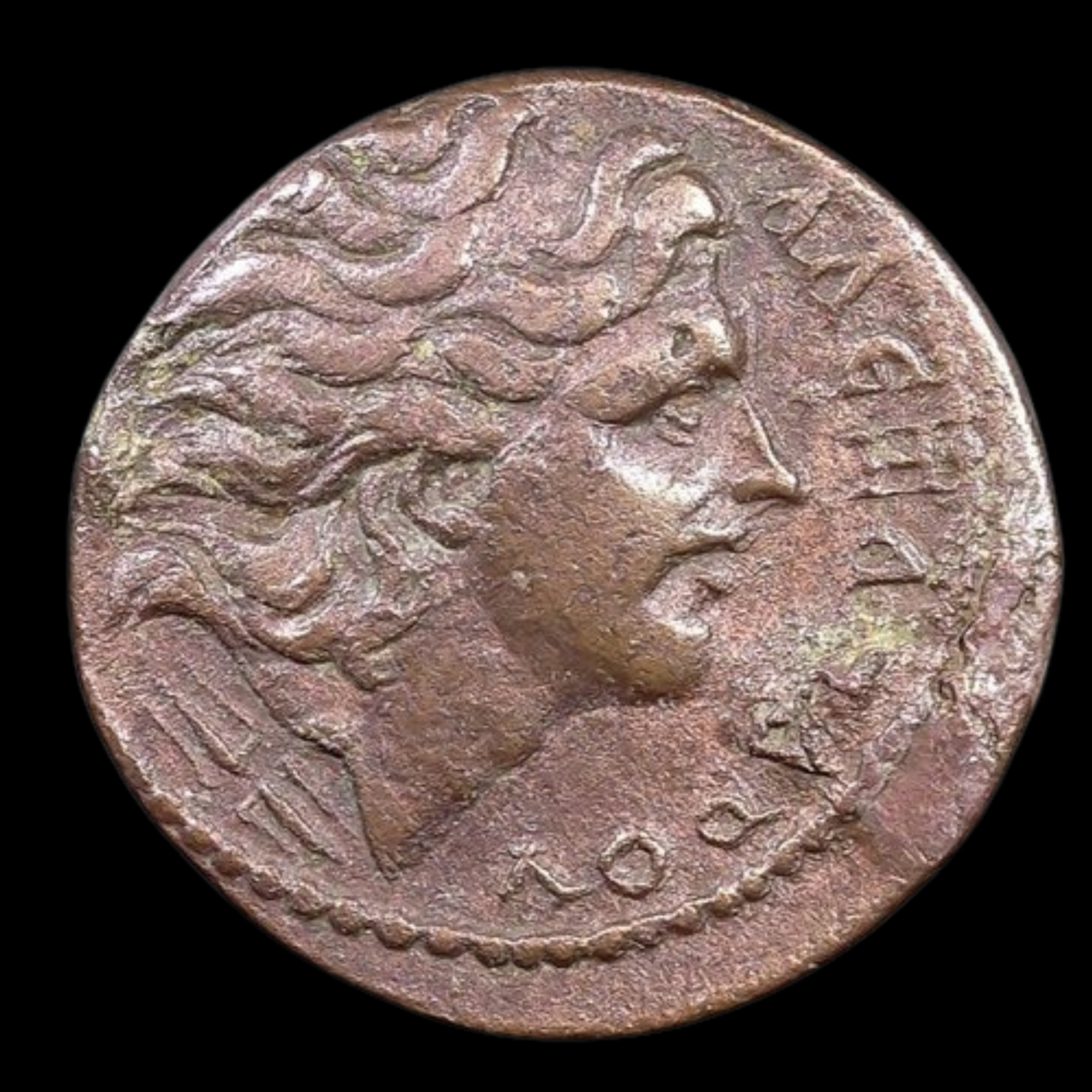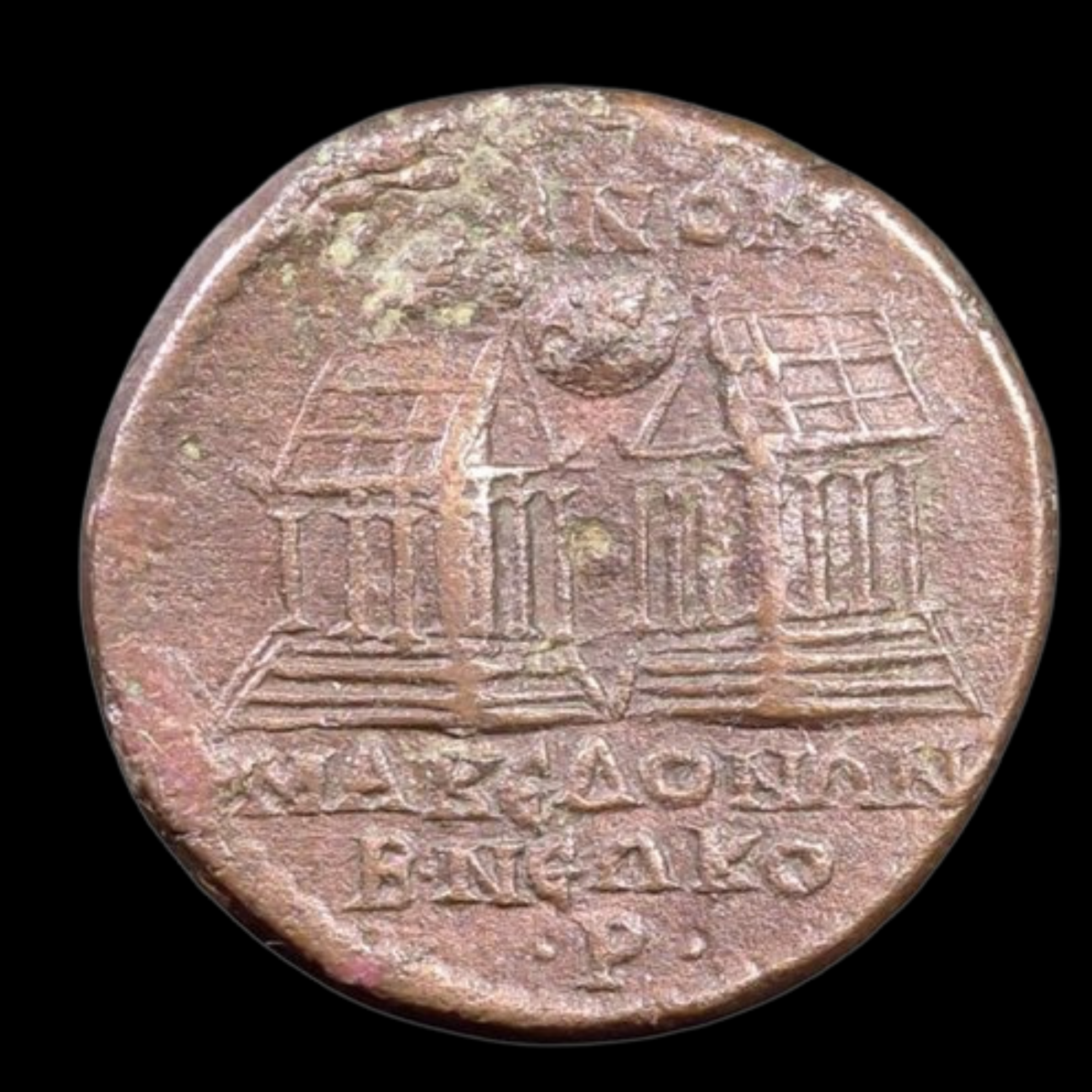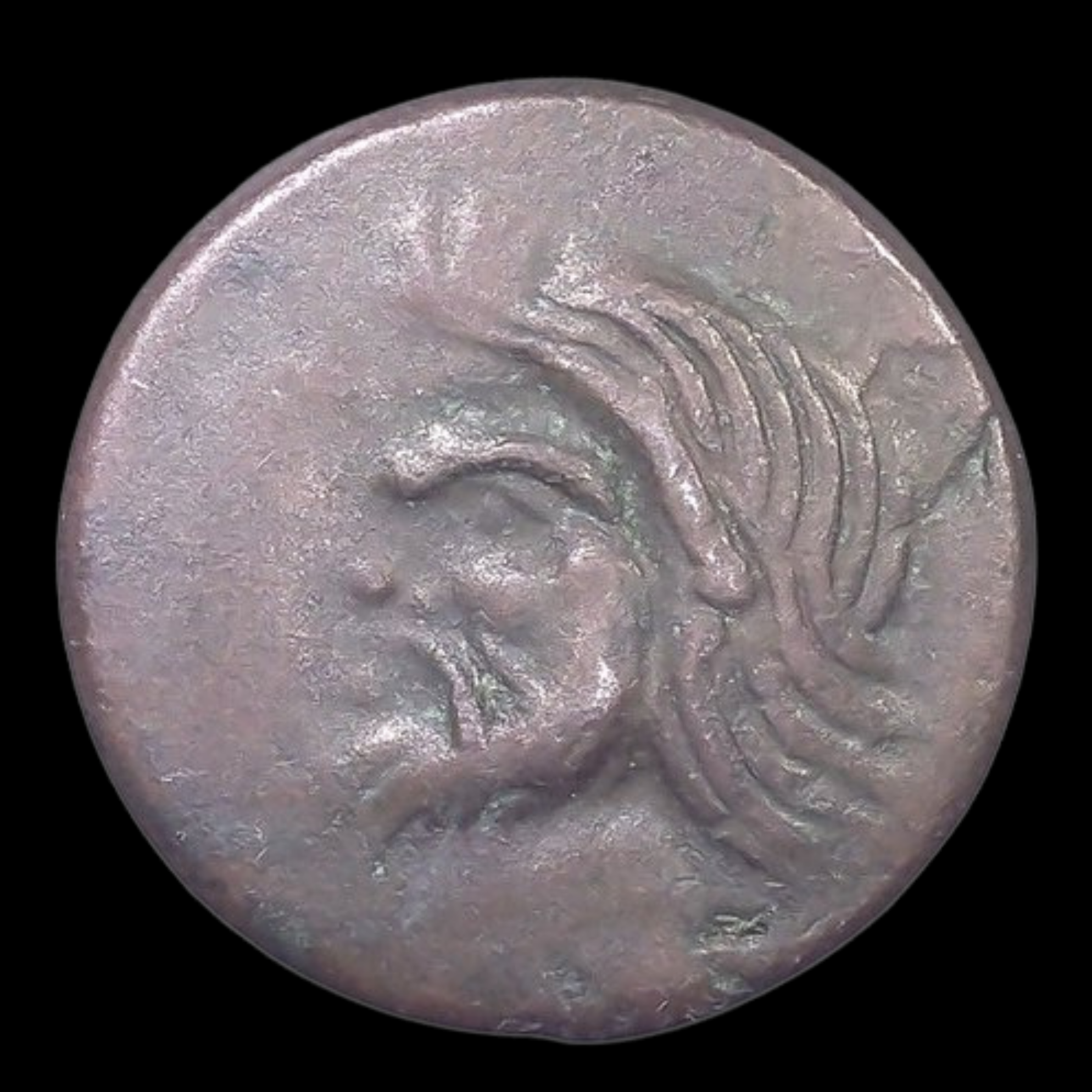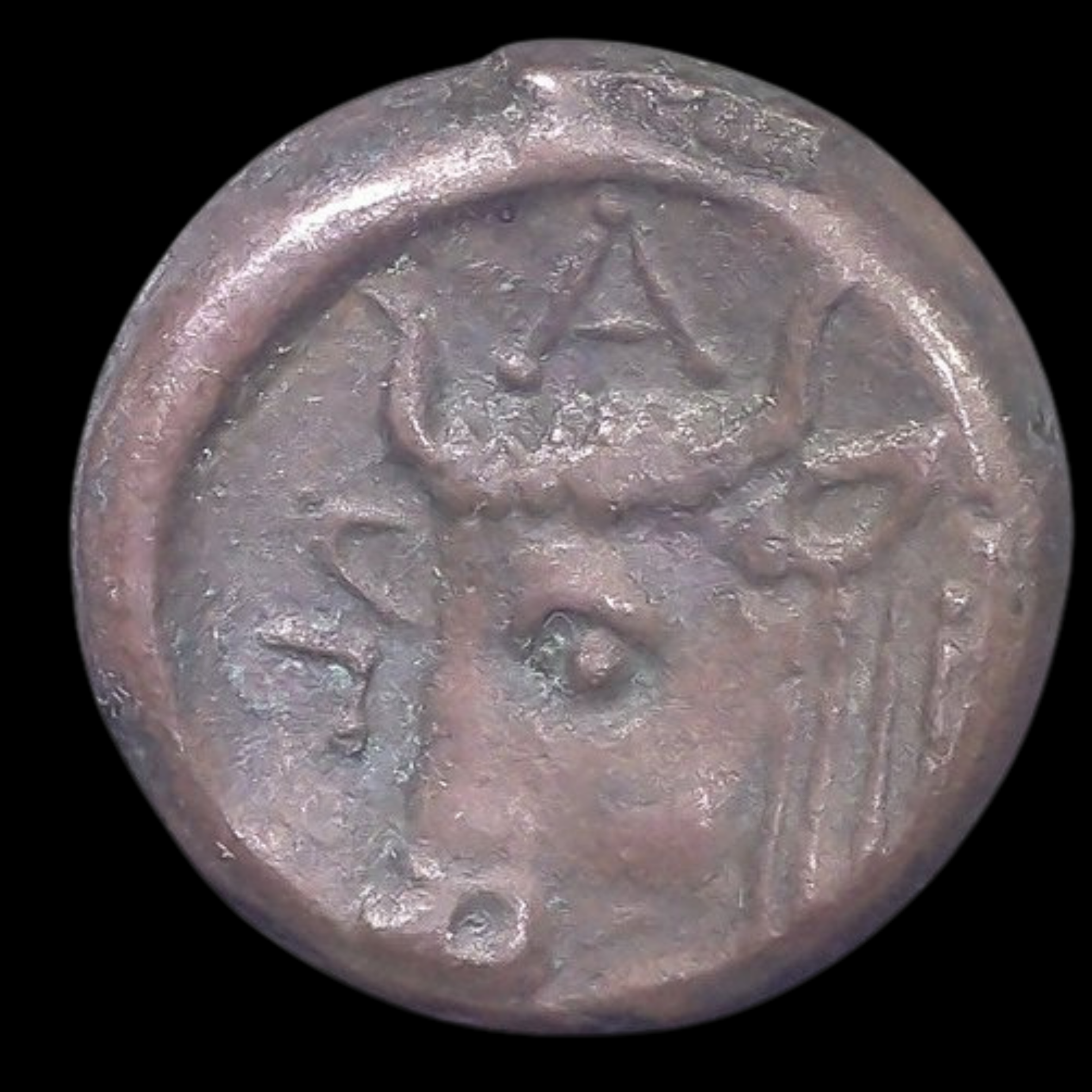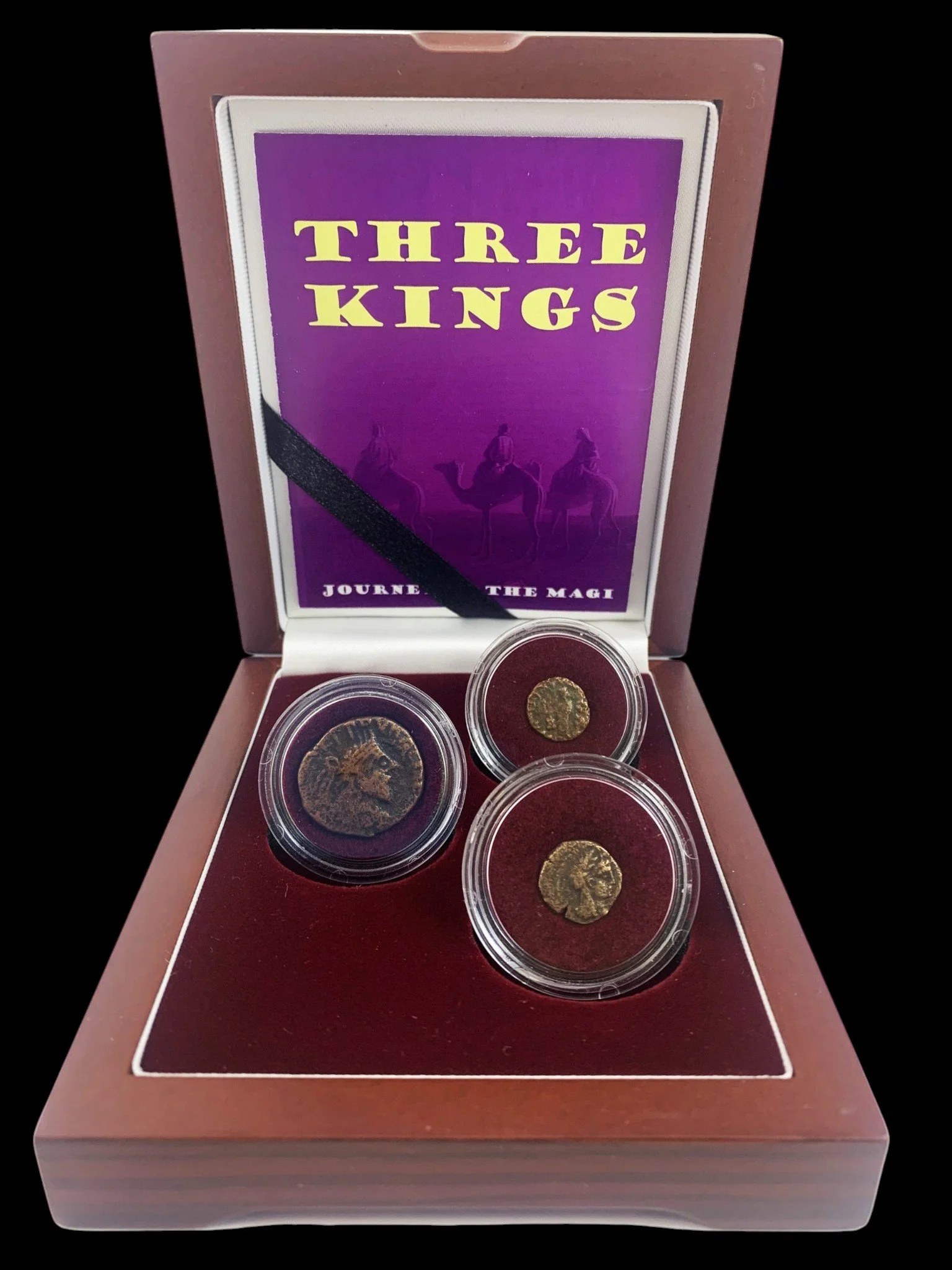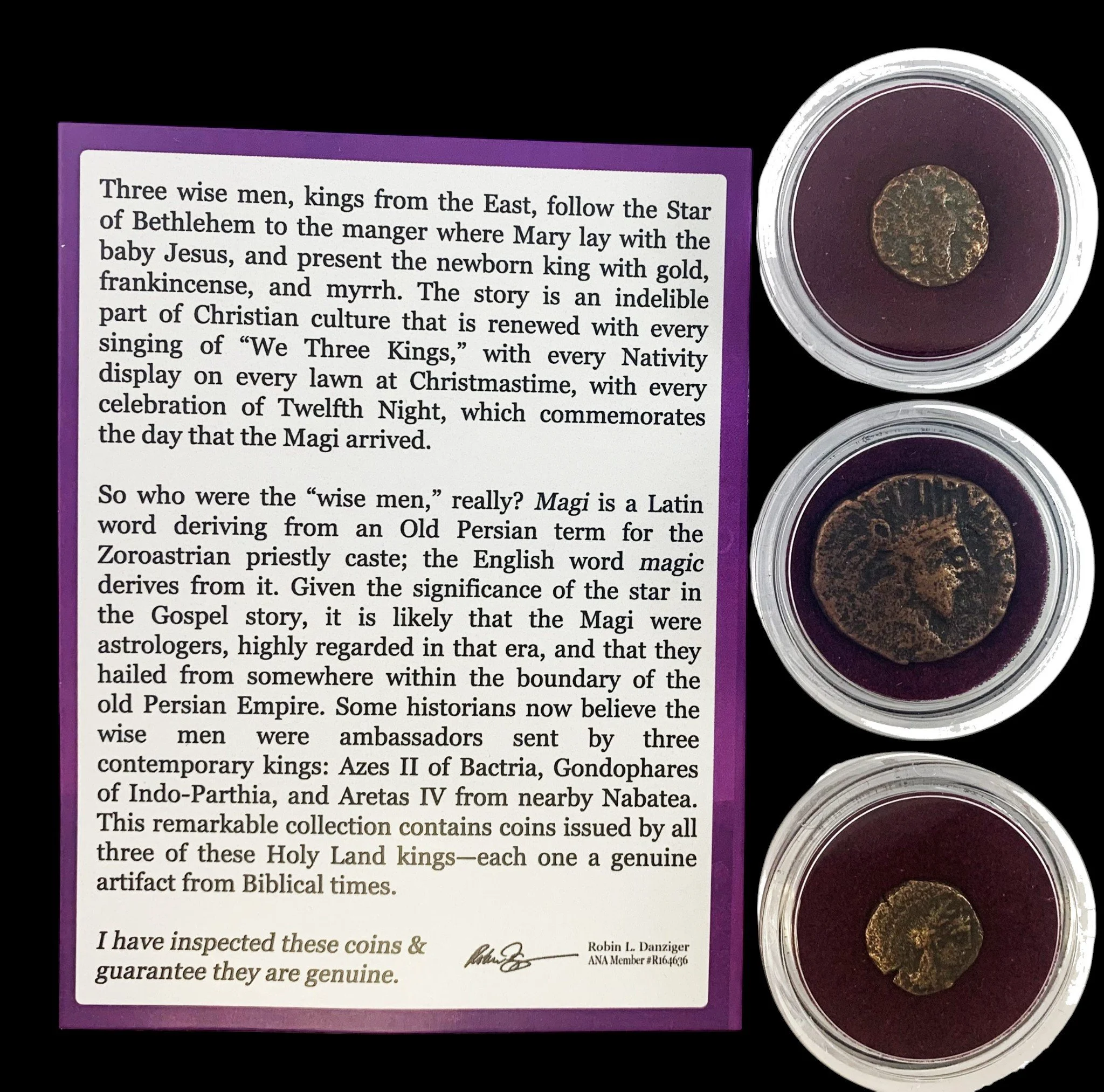 Image 1 of 2
Image 1 of 2

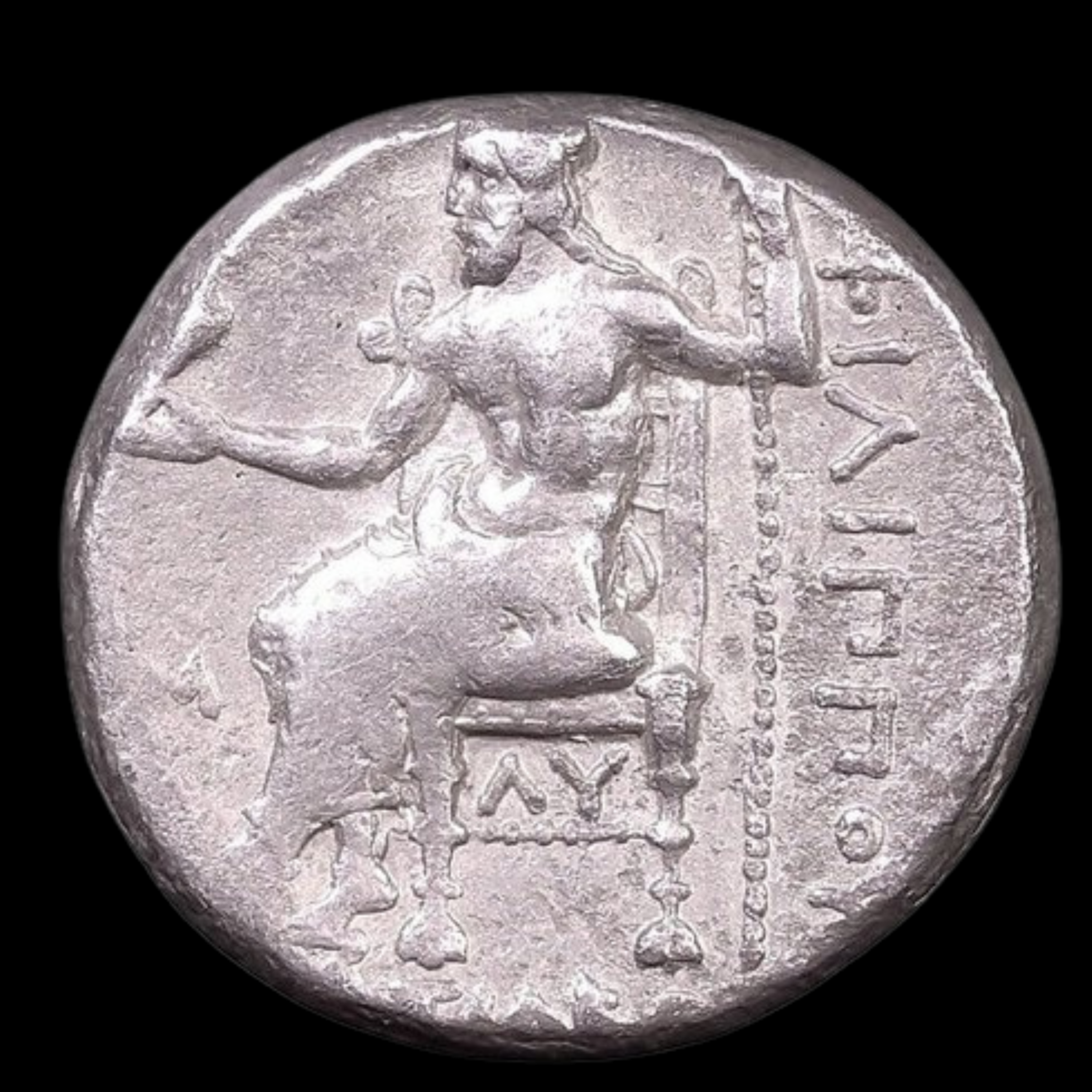 Image 2 of 2
Image 2 of 2



Macedonian Silver Tetradrachm of Philip III (about 2340-2345 years ago)
This substantial silver coin was minted in Babylon (modern Iraq) shortly after Alexander the Great's death, when his half-brother Philip III Arrhidaeus nominally ruled the vast Macedonian Empire. The tetradrachm was the highest common silver denomination in the Greek world, representing significant purchasing power.
Coin Description:
Front side: Head of Herakles (Hercules) wearing lion-skin headdress facing right, continuing the divine imagery established by Alexander
Back side: Zeus enthroned facing left, holding eagle and scepter; letter "M" in left field; letters "AY" under throne
Technical Details:
Silver composition, weighing 16.80 grams
Tetradrachm denomination (equivalent to four drachms, the highest standard silver coin)
Reference: Price-181
Date: 323-317 BCE
Historical Significance:
Philip III Arrhidaeus was Alexander the Great's half-brother who was declared king after Alexander's sudden death, though real power was exercised by Alexander's generals. This coin was produced at the Eastern capital of Babylon (in modern Iraq) during the beginning of the Wars of the Diadochi (Successors), when Alexander's empire began fragmenting. Continuing Alexander's coin designs helped maintain economic stability during political uncertainty, while the placement letters indicate the specific mint and production series of this important trade coin.
This substantial silver coin was minted in Babylon (modern Iraq) shortly after Alexander the Great's death, when his half-brother Philip III Arrhidaeus nominally ruled the vast Macedonian Empire. The tetradrachm was the highest common silver denomination in the Greek world, representing significant purchasing power.
Coin Description:
Front side: Head of Herakles (Hercules) wearing lion-skin headdress facing right, continuing the divine imagery established by Alexander
Back side: Zeus enthroned facing left, holding eagle and scepter; letter "M" in left field; letters "AY" under throne
Technical Details:
Silver composition, weighing 16.80 grams
Tetradrachm denomination (equivalent to four drachms, the highest standard silver coin)
Reference: Price-181
Date: 323-317 BCE
Historical Significance:
Philip III Arrhidaeus was Alexander the Great's half-brother who was declared king after Alexander's sudden death, though real power was exercised by Alexander's generals. This coin was produced at the Eastern capital of Babylon (in modern Iraq) during the beginning of the Wars of the Diadochi (Successors), when Alexander's empire began fragmenting. Continuing Alexander's coin designs helped maintain economic stability during political uncertainty, while the placement letters indicate the specific mint and production series of this important trade coin.


